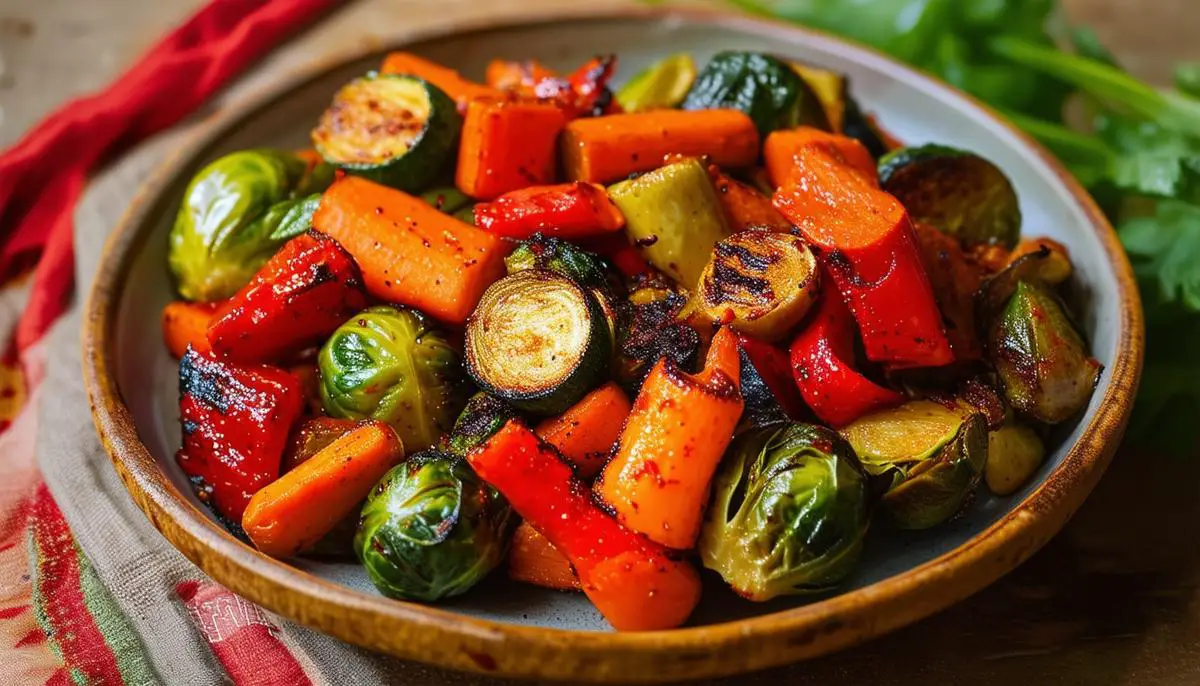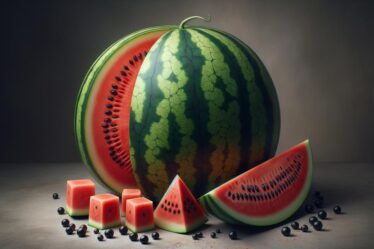
Essence of Korean Hot Pepper Powder
Korean hot pepper powder, locally known as gochugaru, is a quintessential spice that paints the canvas of Korean cuisine with its vibrant colors and robust flavors. Crafted from sun-dried red chili peppers, this powder isn't merely a testament to the heat it holds but also brings a subtle smokiness to the dishes it graces—an aromatic invitation to taste and explore.
Venture into any kitchen where Korean dishes are crafted, and the presence of gochugaru is unmistakable. From the world-renowned kimchi, whose recipe reveres this chili powder as both a colorant and flavor enhancer, to the fiery depths of tteokbokki's sauce, the spice's authenticity offers not just heat but depth to standard recipes and beloved staples of Korean food.
Gochugaru flirts with a kaleidoscope of spiciness levels—from warmly mild to excruciatingly hot—an inclusionary range that ensures its revered status across tables featuring differing taste buds. The affection for gochugaru stretches across South Korea and is quickly hurdling national borders as global gourmands seek the heat and brilliance it brings to every dish it caresses.
Deviations exist within the commercial preparations of gochugaru, distinguishing them from their traditional counterparts. These mass-produced variants tend to dabble on the finer side of the grind — a feature some claim may compromise the exuberant profiling traditional gochugaru is revered for. While finer powders promise a homogeneous blend conducive for consistent cooking outcomes, purists argue that they strip down the rustic, hearty embrace of traditional gochugaru.
Thus stands gochugaru, a symbol of traditional Korean culinary artistry—a polarizing powwow between culture and modernity bound within red hues that promise a journey not only of taste but of delightful texture and remarkable resilience across different culinary terrains.
Selecting the Right Gochugaru
Selecting the right gochugaru is a careful exercise of sensory understanding, a quest for purity and performance in your culinary compositions. Weigh the visual impact heavily: vibrant, consistent redness often indicates quality, with variations leaning towards duller or inconsistent shades hinting at possible inferior drying practices or aging. The grain size plays a critical role in texture and flavor release. Each coarser grain adds a rustic feel to your dishes, providing slow-released heat that enhances a dish's depth without overshadowing its foundational ingredients. Conversely, finer grains offer a fast, even infusion of heat, suitable for sauces and soups where a smooth consistency is paramount.
The aroma is another gateway to assessing quality. Fresh gochugaru should emit a crisp, distinctly peppery smell that should invigorate rather than overwhelm the senses. Any mustiness or blandness can greatly diminish the spice's potency and your dish's authenticity.
When purchasing, look towards trusted brands known for their dedication to traditional practices. These often provide a reliable guidepost for acquiring an authentic product. Specialist Asian markets typically stock various grades of gochugaru, offering an opportunity to examine them firsthand. Online purchases can also yield high-quality spice, though they require trust in suppliers who transparently source and describe their products' origins and processing methods.
Storage significantly affects gochugaru's lifespan; this spice best retains its characteristic vigor when kept in a cool, dark place away from direct sunlight. Consider airtight containers for retaining its pungency, and consume it within three to six months to enjoy its peak flavor profile.
Following these criteria will facilitate a thoughtful acquisition of gochugaru, adding an authentic Korean flavor that enhances any dish it accompanies; handled correctly, it weaves complexity into your culinary ventures with grace and intensity.
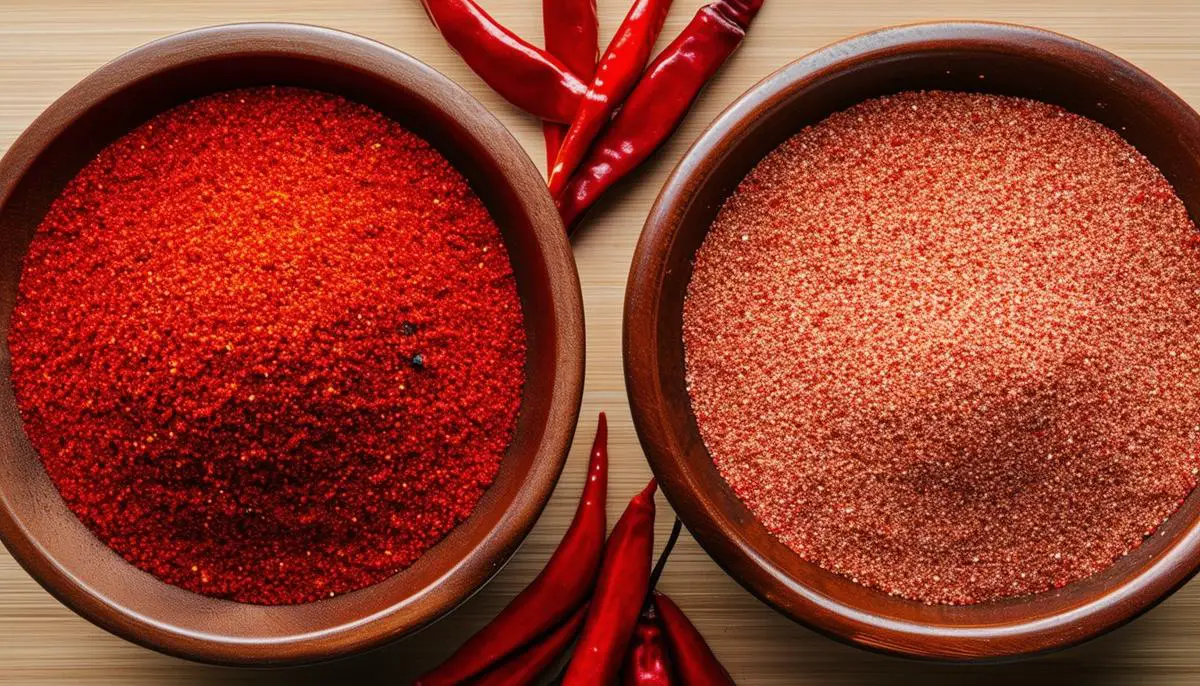
Culinary Applications Beyond Kimchi
Gochugaru, with its distinct heat and smoky aroma, offers more than the traditional backbone to the iconic kimchi. Its versatility spans a vast range of culinary applications, enriching dishes with both flavor and a visual pop of color. Consider its incorporation into marinades where it infuses meats with its signature warmth, transforming an ordinary barbecue into a uniquely piquant experience. Blend gochugaru with garlic, soy sauce, brown sugar, and a hint of sesame oil for a marinade that promises to tantalize your palate and elevate your grilling endeavors.
In stews, the spice performs exceptionally by introducing a gentle intricacy that builds depth without overpowering the primary components. A dash added to a pot of simmering beef stew or even a vegetarian bean chili can intensify the dish's character, meshing seamlessly with other ingredients to create a harmonious flavor profile. Experiment with the proportions to suit your heat preference, allowing gochugaru to either whisper or shout in each spoonful.
Gochugaru's application transcends conventional uses, stepping confidently into the domain of desserts. Imagine the exotic twist it can bring to chocolate-based concoctions. A spicy chocolate ganache tart, for example, sees its flavors amplified with a pinch of gochugaru mixed into the blend, striking an exquisite balance between sweet and spicy. This spice can also transform traditional dessert sauces—try a sprinkle in your next chocolate sauce for a warmly surprising drizzle over ice cream.
Encourage an adventurous spirit in everyday cooking scenarios by infusing gochugaru into recipes where warmth might not typically be expected. Incorporate it into breakfast scrambles or sprinkle it over roasted vegetables to discover new layers of taste. The challenge — and success — lies in allowing gochugaru's flavor to complement, not overpower, the main elements of your dish, achieving an enhancing effect that is both delicate and confident.
Through exploring these novel culinary uses, gochugaru proves itself as an invaluable spice in the kitchen, exciting the senses and expanding the global palate with each innovative application. Its breadth of potential makes it an essential ingredient for any culinary enthusiast looking to broaden their flavor horizons.
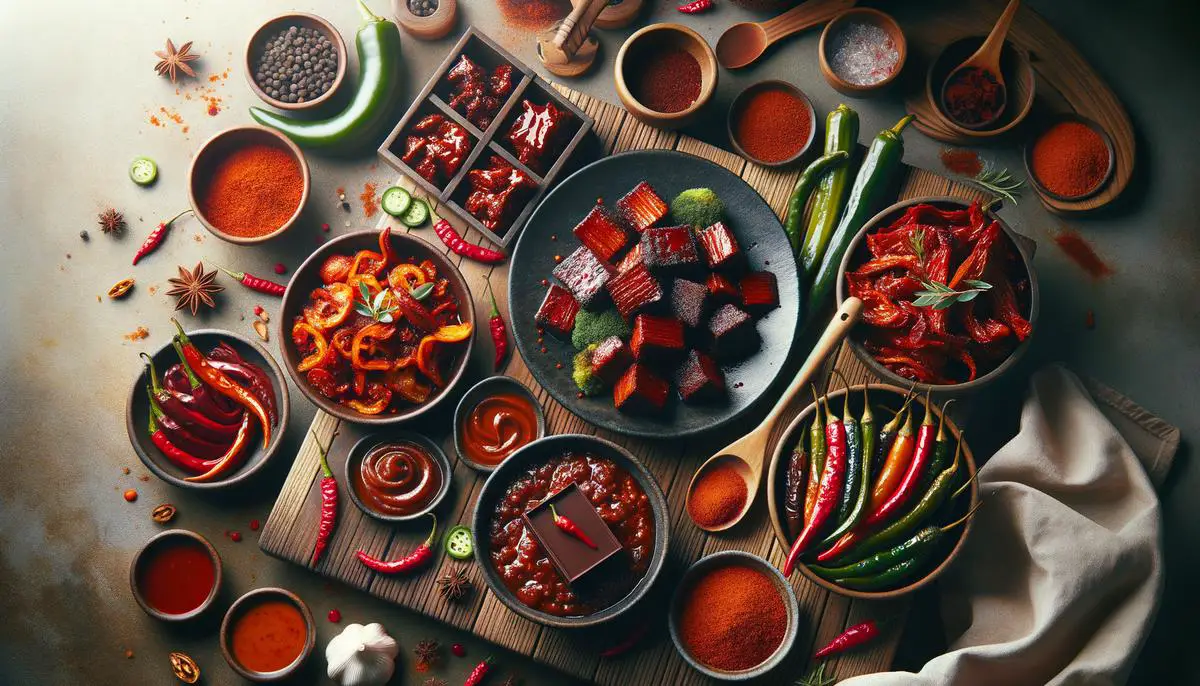
Recipe: Traditional Kimchi
Ingredients:
- 1 medium napa cabbage (about 2 pounds)
- 1/4 cup sea salt
- Water, enough to cover the cabbage
- 1 tablespoon grated ginger
- 1 tablespoon minced garlic (about 4 cloves)
- 1 teaspoon sugar
- 2-3 tablespoons fish sauce or soy sauce, depending on preference
- 1 tablespoon of finely ground Korean red pepper flakes (gochugaru)
- 4 spring onions, trimmed and cut into 1-inch pieces
- 1 daikon radish, peeled and grated
- 1 carrot, peeled and grated
Instructions:
- Prepare the Cabbage:
– Cut the cabbage in half lengthwise, then cut each half into thirds.
– In a large mixing bowl, dissolve the sea salt in enough water to cover the cabbage pieces. Submerge the cabbage in the salt water, placing a heavy plate or lid on top to keep them submerged. Allow the cabbage to soak for about 2 hours, turning every 30 minutes to ensure even brining. - Make the Paste:
– While the cabbage brines, combine the ginger, garlic, sugar, fish sauce (or soy sauce), and gochugaru in a small bowl. Mix these ingredients into a paste. - Prepare Vegetables:
– In another bowl, mix the spring onions, grated radish, and carrot. Set aside. - Rinse and Combine:
– After 2 hours, rinse the cabbage under cold water roughly 3 times to remove excess salt and ensure it's not overly salty. Give it a squeeze to remove excess water.
– Add the rinsed cabbage to the vegetable mix. Wearing gloves to protect your hands, thoroughly massage the spice paste into the vegetables until completely coated. - Fermentation:
– Pack the kimchi into a clean jar, pressing down on it until the brine rises to cover the vegetables. Leave at least an inch of space at the top.
– Seal the jar tightly and leave it to ferment at room temperature for 2-5 days, depending on your taste preferences and the ambient temperature. Check daily if the gases need to be released to prevent bursting. - Storage:
– After fermentation, store kimchi in the refrigerator. It continues to ferment but at a slower pace. Enjoy it chilled.
Tips for Best Results:
- Ensure all utensils and your hands are clean when handling ingredients to avoid introducing harmful bacteria.
- Taste test during fermentation to find your preferred balance of sourness and spice.
- Kimchi's flavor develops and deepens over time; it is often best after a few weeks in the refrigerator.
Serving Suggestions:
- Serve kimchi as a side dish with rice, in stews, or use it as a flavorful ingredient in various Korean dishes to add depth and spice.
Nutritional Information (per 1 cup serving):
- Calories: 23 kcal
- Carbohydrates: 4.1 g
- Protein: 1.5 g
- Fat: 0.2 g
- Fiber: 1.6 g
- Sodium: 747 mg
- Sugar: 2.4 g
- Vitamin A: 3717 IU
- Vitamin C: 14 mg
- Calcium: 40 mg
- Iron: 1.3 mg
- Potassium: 151 mg
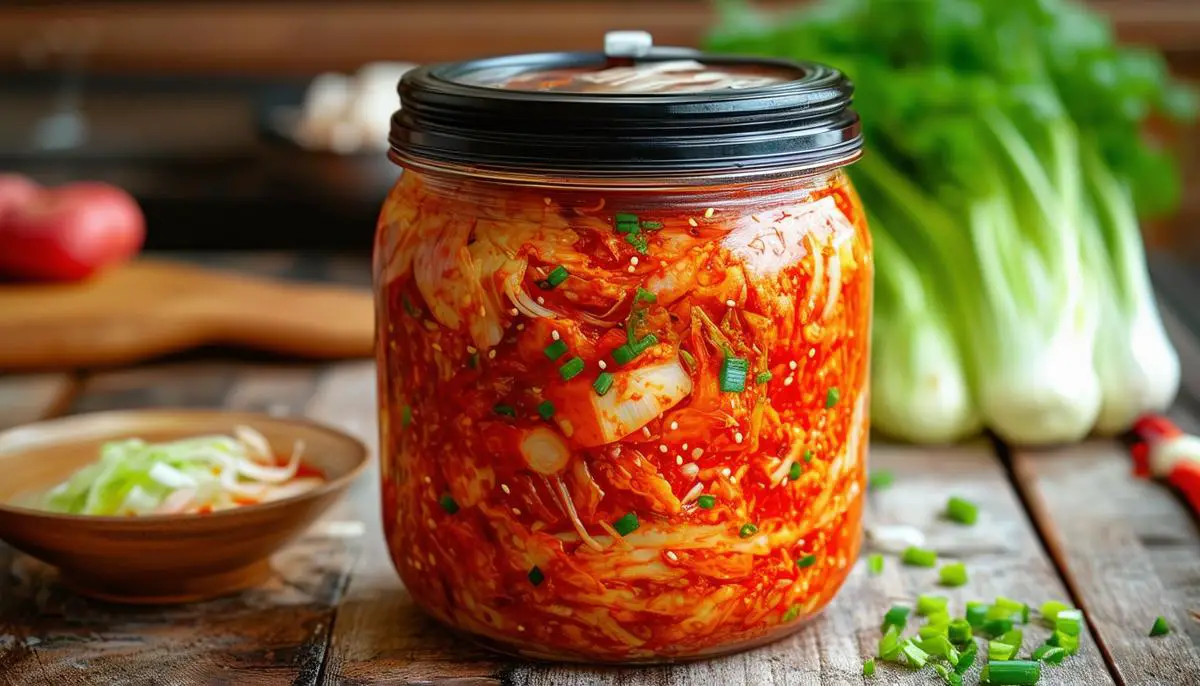
Recipe: Gochugaru Tteokbokki
Ingredients:
- 500 grams of tteok (Korean rice cakes), preferably cylinder-shaped
- 2 cups of water
- 2 tablespoons of gochugaru (adjust according to spice preference)
- 1 tablespoon soy sauce
- 1 tablespoon sugar
- 3 cloves garlic, minced
- 100 grams fish cakes, sliced
- 2 green onions, sliced
- 1 teaspoon sesame seeds (optional)
- 1 teaspoon sesame oil (optional)
Instructions:
- Soften the Rice Cakes:
If the tteok is refrigerated and firm, soak in warm water for about 20 minutes or until softened. Drain thoroughly. - Prepare the Sauce:
In a mixing bowl, combine gochugaru, soy sauce, sugar, and garlic with 2 cups of water. Mix until the sugar has dissolved and the mixture is uniform. - Cook the Tteokbokki:
In a large pan or skillet, add the gochugaru sauce mixture and bring to a simmer over medium heat. Add the drained rice cakes to the pan. Stir gently until the rice cakes begin to absorb the sauce and plump up, about 8-10 minutes. - Add Additional Ingredients:
Incorporate fish cakes into the pan. Continue to cook, frequently stirring, until the fish cakes are warm and the sauce has thickened slightly, about 5-6 minutes. If the sauce becomes too thick or starts sticking to the pan, add a bit more water and stir well. - Garnish and Serve:
Remove the pan from heat. Stir in the sliced green onions and drizzle with sesame oil if using. Sprinkle sesame seeds over the top as a garnish right before serving. - Adjusting Spice Levels:
For a milder version, start with 1 tablespoon of gochugaru and adjust as needed after tasting. For a spicier kick, increase the amount of gochugaru or add a splash of Korean hot sauce to your preference.
Variations:
- Vegan Version: Replace fish cakes with thick slices of king oyster mushroom or add more varied vegetables like broccoli or bell peppers.
- Seafood Twist: Introduce shrimp or squid during the final minutes of cooking for an oceanic take on this classic street food staple.
This fulfilling tteokbokki will dazzle your taste buds with its spicy, complex flavors all while highlighting the dazzling properties of gochugaru. Enjoy this beloved Korean dish with a twist right from your kitchen.
Nutritional information per serving:
- Calories: 310 kcal
- Carbohydrates: 62 g
- Protein: 7 g
- Fat: 3 g
- Sodium: 660 mg

Recipe: Gochugaru Spiced Roasted Vegetables
Ingredients:
- 2 cups mixed vegetables (carrots, bell peppers, zucchini, and Brussels sprouts), chopped
- 1 tablespoon olive oil
- 1 to 2 tablespoons gochugaru, according to taste preference
- 1 teaspoon salt
- 1/2 teaspoon black pepper
- Optional: 1 teaspoon garlic powder
Instructions:
- Preheat Oven and Prepare Baking Sheet:
Preheat your oven to 400°F (200°C). Line a baking sheet with parchment paper for easy cleanup. - Prepare the Vegetables:
Wash and chop the vegetables into uniform pieces to ensure even cooking. - Season the Vegetables:
In a large bowl, toss the chopped vegetables with olive oil, gochugaru, salt, and black pepper until evenly coated. For added flavor, sprinkle garlic powder over the vegetables. - Roast:
Spread the vegetables in a single layer on the prepared baking sheet. Roast in the preheated oven for 25-30 minutes, or until the vegetables are tender and the edges start to brown. Stir halfway through the cooking time to promote even roasting. - Adjust the Spice Level:
For less heat, reduce the amount of gochugaru to 1 tablespoon or less before roasting. If you prefer more spiciness, increase the gochugaru or add some additional after roasting.
Pairing Suggestions:
These spicy roasted vegetables pair wonderfully with mild dishes like grilled chicken, baked fish, or rice to balance the flavors. They also make a colorful and flavorful addition to bowls or as a side to Korean-inspired dishes.
By following these simple steps, you can enjoy a versatile dish that introduces a delightful kick of gochugaru to your meal, perfectly combining taste and texture with health benefits.
Nutritional information per serving:
- Calories: 70 kcal
- Carbohydrates: 8 g
- Protein: 2 g
- Fat: 4 g
- Sodium: 590 mg
